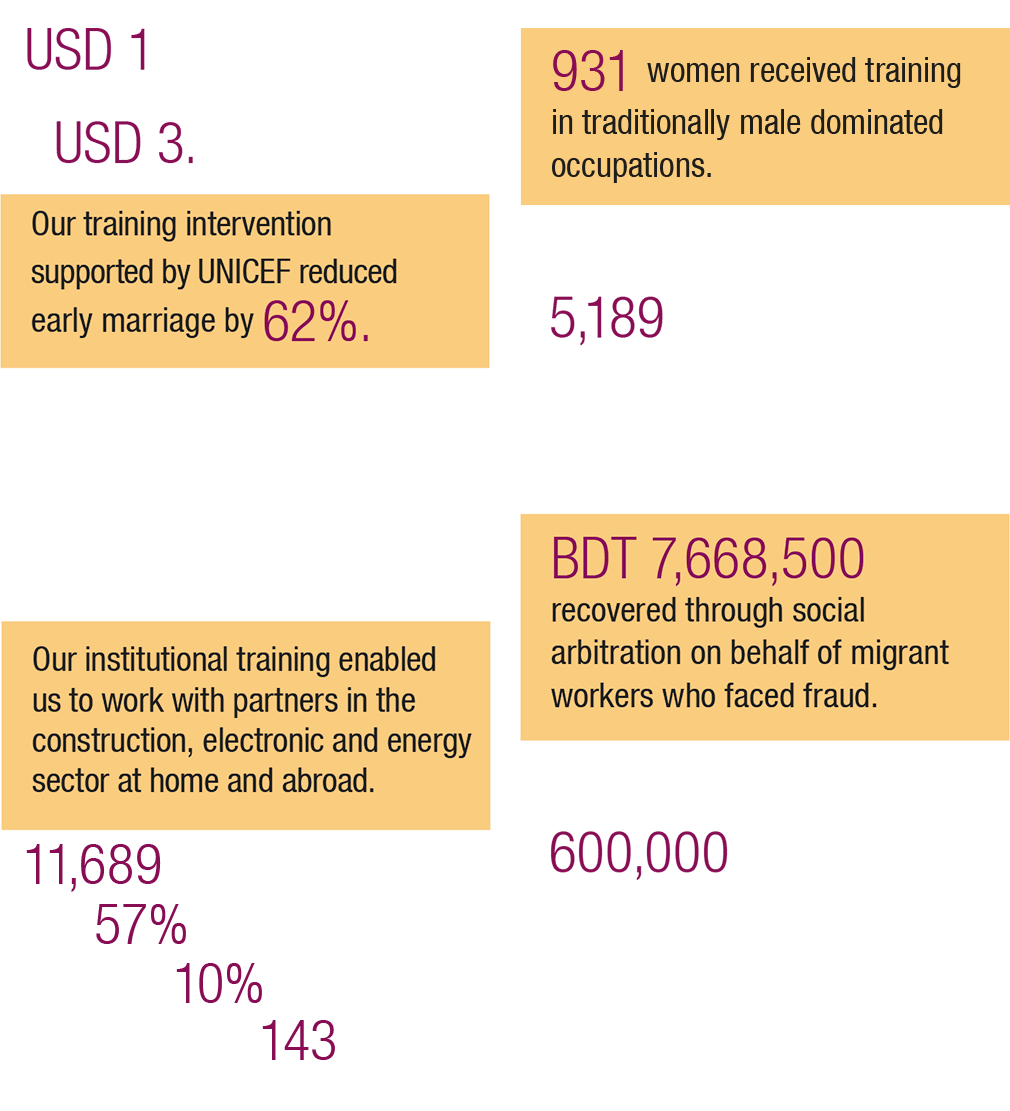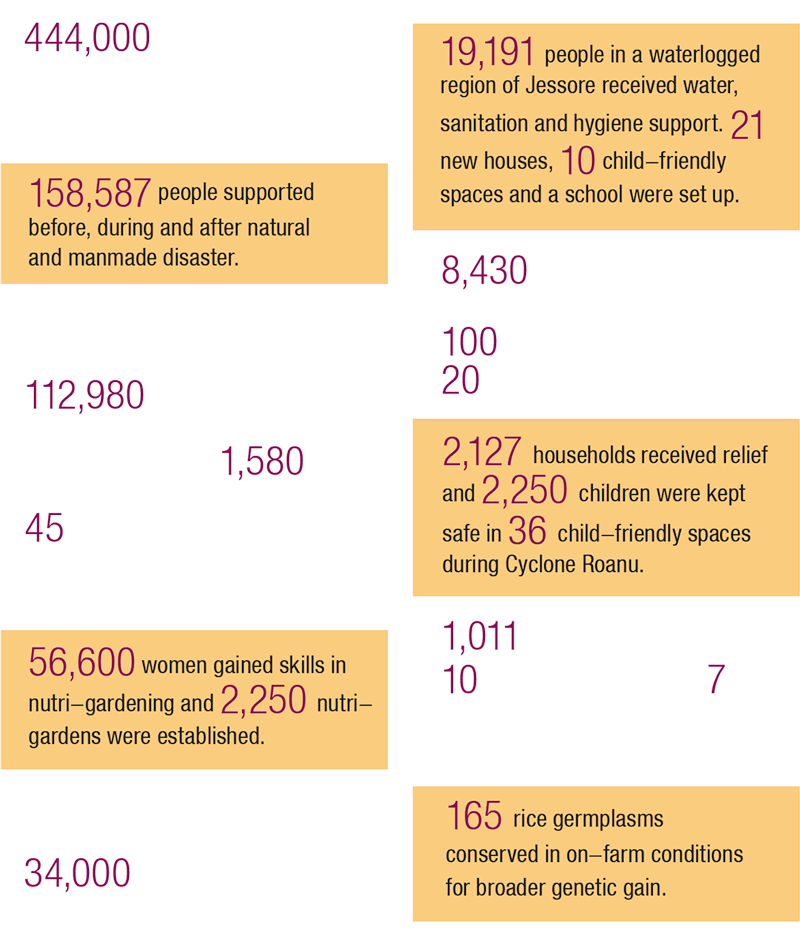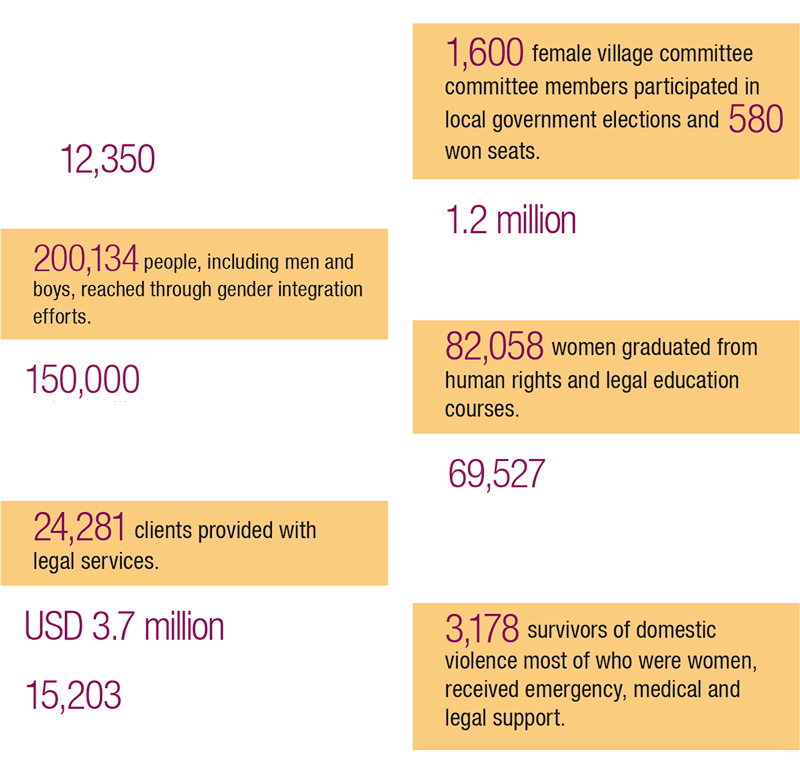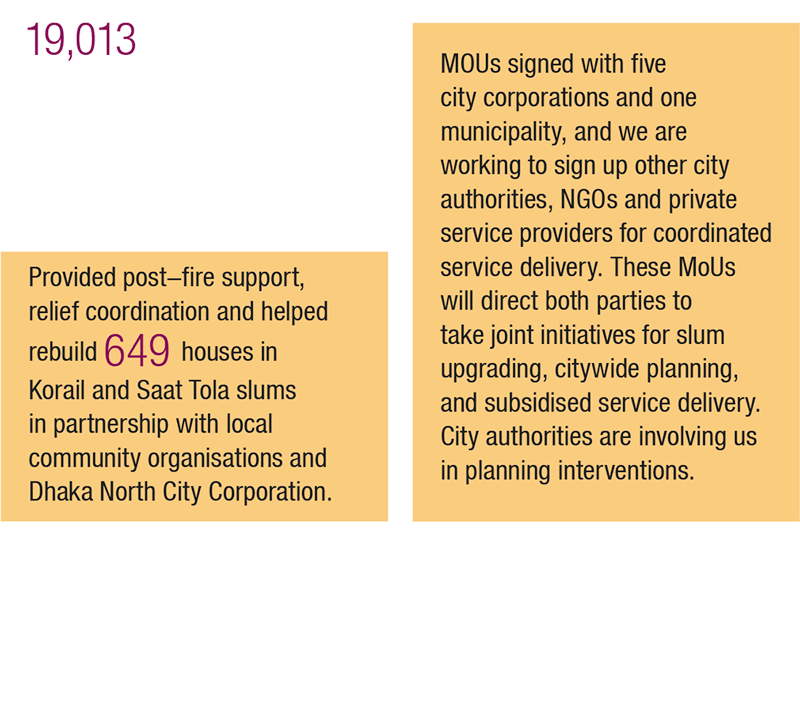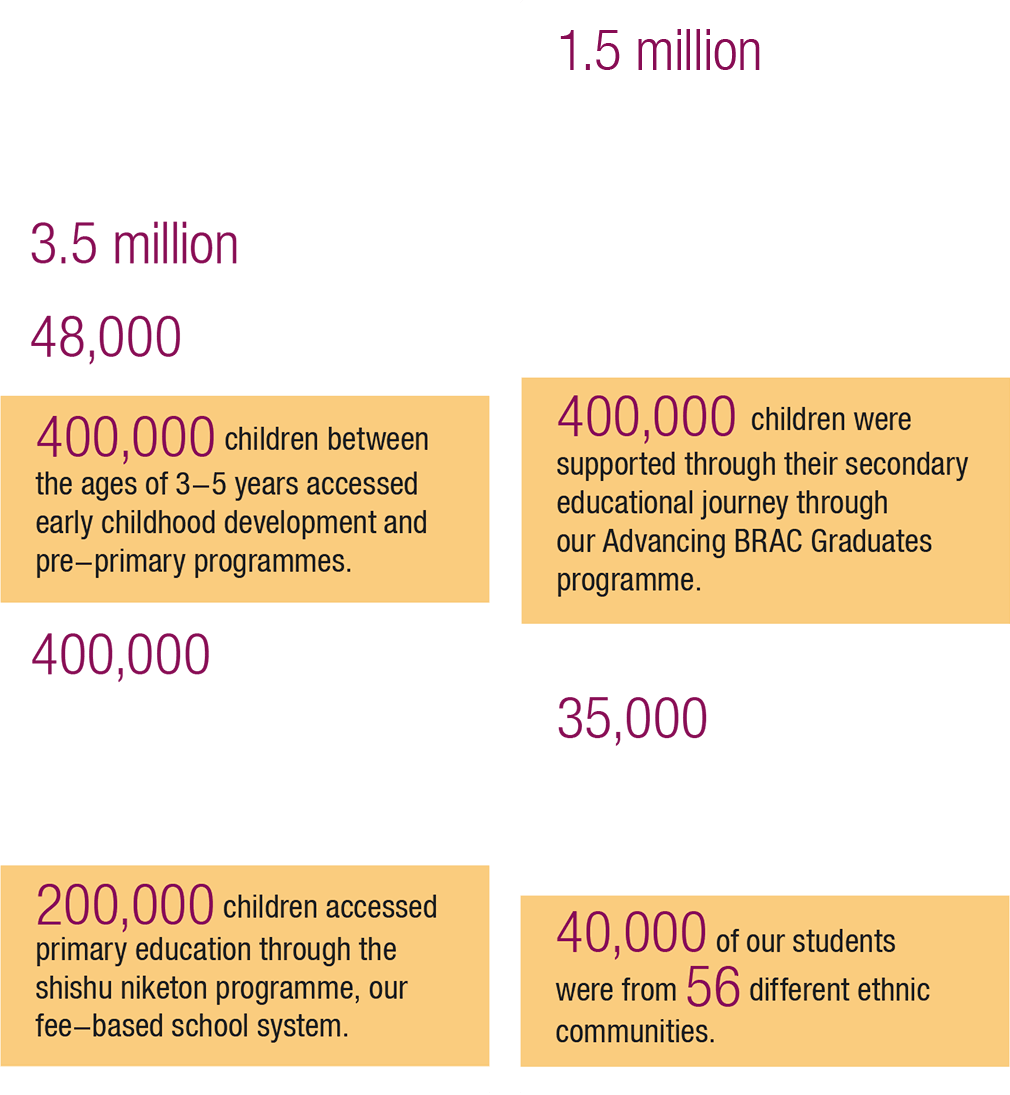Eliminating extreme poverty
2.5 million households in Bangladesh live in extreme poverty.
The challenge
People living in extreme poverty are forced to make impossible choices every single day about basic necessities such as food, medicine, housing, or education.
Extreme poverty is more than numbers. It is the denial of dignity.
As much progress has been made globally to alleviate poverty in all its forms, we are now intent on eradicating it.
Bangladesh has reduced its poverty level to 27%, but the challenge of extreme poverty remains - and women are disproportionately affected.
Pockets of extreme poverty are particularly prevalent in the hard-to-reach regions, where often entire communities lack access to basic services and limited economic opportunities.
The approach
We are working towards eliminating extreme poverty completely from Bangladesh by 2020, through a powerful combination of direct and complementary efforts.
Firstly, we are graduating over half a million households out of extreme poverty over the next five years through our own activities. Our graduation approach for extreme poverty is a development intervention for situations where microfinance is inappropriate or insufficient, specifically designed to support and uplift households left behind by macroeconomic growth and mainstream development interventions. We are intensifying and scaling up these efforts, as well as looking into how to further improve effectiveness and decrease the cost.
We are taking a specially integrated approach in poverty pockets such as wetlands (haor), riverine islands (char) and indigenous populations.
These regions are socially marginalised and geographically detached from mainstream development interventions. We are providing multi-faceted support through a single platform that includes education, legal services and activities that promote women’s empowerment.
Beyond direct service provision, we are working closely with the government to affect favourable changes to its social safety net programmes. Internationally, we are also assisting other countries and organisations to adopt our graduation model.
The impact

MORE DIGITAL = MORE PERSONALISED
Pockets of extreme poverty exist all across Bangladesh, often in remote settings with limited infrastructure. Manual data management in these areas is time-consuming, limiting the face-to-face hours that staff can spend in client homes.
To tackle this challenge, we are digitising the systems that we use to monitor graduation, in collaboration with the US-based technology solutions provider Amplifier Strategies. It is speeding up data collection and allowing rapid decision-making.
While we often associate digital systems with easing the responsibilities of office-based urban staff, it is our operations in the remotest areas that report the most positive impacts.
Field staff input data into smartphones during each household visit. GPS instantly locates the place visited and identifies the client. Her information is added, verified and recorded in real-time.
One measurable gain is that the end-line surveys, carried out at the end of every 24-month programme cycle of graduation, will no longer be necessary. Digital data entry is improving data quality and decreasing the time needed to administer surveys by more than half. Impact analysis will also take less time and be more comprehensive, as the system will contain aggregated data of all households. Monitoring resources can be efficiently allocated, which will specially benefit regions where qualified workers are scarce.
The digitising process is expected to cover 30% of our field operations by 2017.

